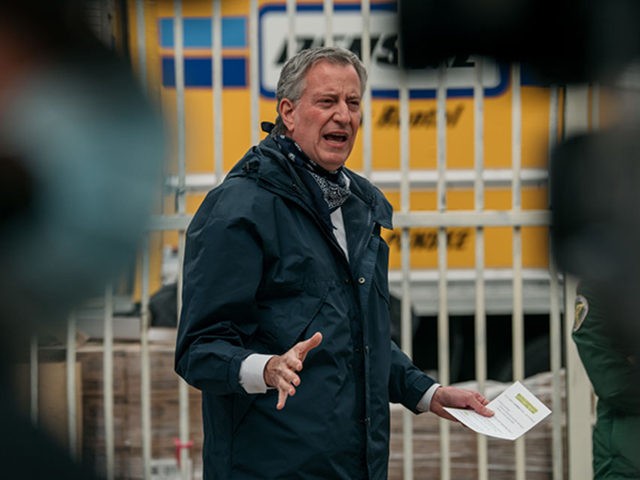It has been almost four months since more than one million children in New York City were banned from their classrooms to stop the spread of coronavirus and parents were tasked with educating their children.
And it is still two months away from the traditional start of public schools in September, but Mayor Bill de Blasio (D) has announced that classroom attendance next year will be limited to one to three days a week.
The coronavirus is cited as the reason for the decision that will mean hundreds of thousands of parents will have to figure out how to care for and educate their children while working to pay the bills and put food on the table.
“Everyone is looking to the public school system to indicate the bigger direction of New York City,” de Blasio said of his plan on Wednesday.
The announcement comes as an increasing number of experts are talking about the lasting damage keeping children out of school could cause, including the American Association for the Advancement of Science:
Continued closures risk “scarring the life chances of a generation of young people,” according to an open letter published this month and signed by more than 1500 members of the United Kingdom’s Royal College of Paediatrics and Child Health (RCPCH). Virtual education is often a pale shadow of the real thing and left many parents juggling jobs and childcare. Lower-income children who depend on school meals were going hungry. And there were hints that children were suffering increased abuse, now that school staff could no longer spot and report early signs of it. It was time, a growing chorus said, to bring children back to school.
Outbreaks in schools are inevitable,” says Otto Helve, a pediatric infectious disease specialist at the Finnish Institute for Health and Welfare. “But there is good news.” So far, with some changes to schools’ daily routines, he says, the benefits of attending school seem to outweigh the risks—at least where community infection rates are low and officials are standing by to identify and isolate cases and close contacts.
The New York City policy covers the 1,800 schools in the city, according to the New York Times:
Under the mayor’s plan, there will probably be no more than a dozen people in a classroom at a time, including teachers and aides, a stark change from typical class size in New York City schools, which can hover around 30 children.
Under Mr. de Blasio’s plan, school principals will spend July determining which of three staggered schedule options to adopt. That decision will depend on how many students and staff can fit into school buildings while social distancing, and on how many families want their children to return to school in the first place.
The vast majority of the city’s public school students are low-income, and many of their parents and caretakers are essential workers who had little choice but to report to work even at the height of the pandemic.
The Times spoke with Anand Raghunath, a parent of two children who attend school in East Harlem. He said after hearing de Blasio’s plan he turned to his wife, a hospital worker, and said, “What are we going to do?”
He said the couple are considering having his mother-in-law, who lives in California, come to New York to help care for their children.
“We’re all at a standstill here,” Raghunath said.
“Schools Chancellor Richard A. Carranza said Wednesday that the city will try to bring as many Department of Education employees with teaching certificates into classrooms as possible,” the Times reported. “Though union leaders have raised alarms about whether schools will have enough personal protective gear and nurses to safely reopen, the city has said it will deep clean schools each night and have sanitizer and disinfectant in all classrooms and common spaces.”
“We can make up learning for students,” Carranza said. “We cannot bring a student back who is infected and passes away.”
The Times report noted that Gov. Andrew Cuomo (D) has the ultimate authority over when schools open across the state, including New York City.
So far, he has not contradicted de Blasio but has said that he will decide “whether to reopen schools at all, and that his office will make those decisions in the first week of August.”
The fate of school reopening may also be tied to new guidelines the CDC is set release next week.
“If the guidance is more relaxed, it could mean that New York and other districts across the country may be able to accommodate more children in person come fall — if districts believe the new recommendations are safe,” the Times reported.
De Blasio’s plan would require all teachers and students to wear masks throughout the school day.
Follow Penny Starr on Twitter.

COMMENTS
Please let us know if you're having issues with commenting.